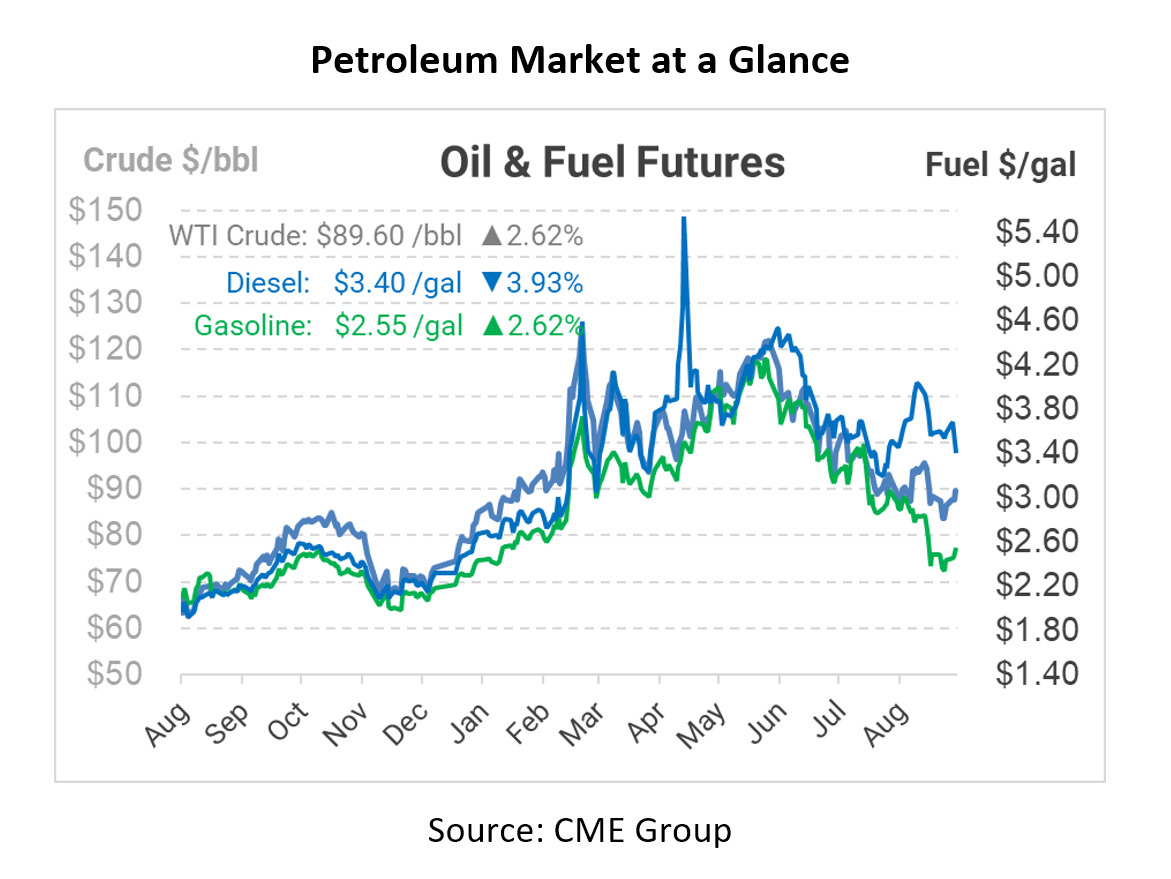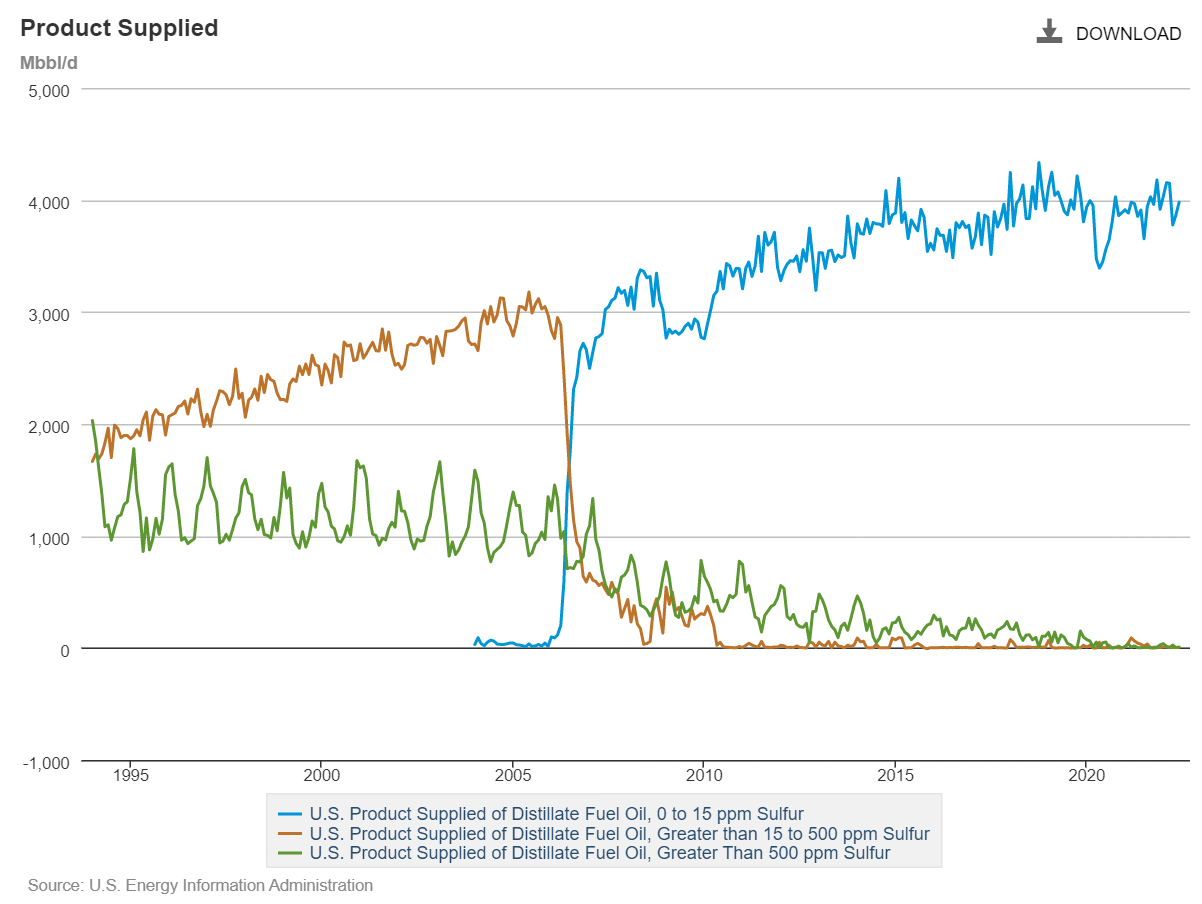
What Is It – Ultra Low Sulfur Diesel
Welcome to our continuing Wednesday FUELSNews series: “What Is It?” Each week, we’ll pick a fuel industry topic to explain, so you can learn more about the market and what drives it. Want to suggest a topic? Email the author, Alan Apthorp, at aapthorp@mansfieldoil.com. Thank you for the great suggestions so far – we’ll be adding topics on the RVO, renewable fuels, and different fuel terminal types in the near future. Keep the suggestions coming!
Do you take for granted the fuel you put in your equipment? From tractor-trailers to dump trucks to yellow iron to generators, diesel fuel is a critical product for keeping engines running. But how much do you really know about diesel fuel? Today, we’ll take a quick look at what diesel fuel is and why it takes the form it does today.
What Is Diesel?
According to the Energy Information Administration: Diesel fuel is the common term for the distillate fuel oil sold for use in motor vehicles that use the compression ignition engine named for its inventor, German engineer Rudolf Diesel. He patented his original design in 1892.
Diesel fuel technically refers to any product that works in a diesel engine, though the vast majority of modern diesel fuel is produced from crude oil. Diesel fuel goes by many different names – distillate, gas oil, petrodiesel, kerosene, ULSD, and gas oil (and even “Solar” in Indonesia, where the name is trademarked by the national oil company). Some of these words are interchangeable (gas oil, petrodiesel), while others refer to specific forms of the product (ULSD, kerosene). The words “diesel” and “distillate” are often use interchangably; technically, a distillate is any product distilled from petroleum, and includes three products – Distillate #1, Distallate #2, and Fuel Oil #4. Gasoil is a common term for diesel fuel in Europe.
For our purposes today, we’ll be talking primarily about #1 and #2 – which represent kerosene and road diesel, respectively. Diesel #2 is typically what people mean when they say “diesel” – it’s the fuel you’d buy at most any gas station or truck stop for most of the year. During the winter, #1 diesel (aka kerosene) is blended into the #2 diesel to prevent gelling issues.
Diesel #2 in the US and Canada must adhere to ASTM D975, the official specifications for diesel. Any product that meets the standards of ASTM D975 can be called diesel (which is important to understand when talking about renewable diesel).
What’s the Difference between Gasoline and Diesel?
In the US, the overwhelming popularity of gasoline among consumers can make diesel fuel a bit more confusing. While both come from crude oil, the two products should never be mixed and have very different properties.
Diesel fuel is thicker than gasoline, and packs in approximately 20% more power per gallon. That’s why heavy duty equipment tends to use diesel fuel – it needs more power. However, diesel engines are louder and heavier, so US consumers tend to favor gasoline engines. Gasoline is much more volatile – if you throw a match into a can of gasoline, you get a large boom. The same match would go out if you drop it in diesel! (Don’t believe it? Watch this video.)
A good way to understand the difference is to look at the key measurement for both products. Gasoline’s primary measurement is its octane rating, which measures the volatility of the fuel. Higher octane means lower volatility, which equates to a more stable performance in the engine – that’s why high-powered sports cars sometimes require premium gasoline. On the other hand, diesel is measured by its cetane number, which measures the fuel’s ability to combust under pressure. A higher cetane number is preferred, which means the fuel ignites faster under pressure and delivers more power. The two measurements are opposites – high octane gasoline is less likely to combust, while high cetane diesel is more likely to combust.
Why Is It “Ultra Low Sulfur”?
In 1993, the EPA established a requirement that diesel fuel contain less than 500 parts per million (ppm) of sulfur. At the time, the product was called “low sulfur diesel” or LSD. Although some countries still utilize high-sulfur and low-sulfur diesel (especially in marine settings), most of the western world has lowered the limit.
In 2006, the EPA began lowering the standard to 15 ppm sulfur for on-road diesel, creating the “ultra-low sulfur diesel” category. The transition for off-road equipment, locomotives, and marine fuel came in 2007. By 2010, virtually all low sulfur diesel had been transitioned out of production, and ULSD became the dominant product on the market. The chart below shows the transition in 2006, with the brown line showing low-sulfur diesel and the blue line showing ULSD.
What about Dyed Diesel?
The government requires that taxes be collected on diesel fuel used on government roads and highways. But when diesel is consumed off-road – which is common in construction, mining, and agriculture among other industries – those taxes may not apply. To designate that fuel will be used off-road, fuel suppliers will add a few drops of colored red dye, creating “dyed diesel”. There’s no actual difference between the products, just the addition of the dye. Just make sure to never put dyed diesel in equipment that travels over the road – the penalties for tax evasion if caught are severe. But if your equipment is exclusively used off-road, then you can save quarters per gallon by eliminating the tax portion of your invoice.
This article is part of Daily Market News & Insights
Tagged: Ultra Low Sulfur Diesel
MARKET CONDITION REPORT - DISCLAIMER
The information contained herein is derived from sources believed to be reliable; however, this information is not guaranteed as to its accuracy or completeness. Furthermore, no responsibility is assumed for use of this material and no express or implied warranties or guarantees are made. This material and any view or comment expressed herein are provided for informational purposes only and should not be construed in any way as an inducement or recommendation to buy or sell products, commodity futures or options contracts.







